Running a restaurant is hard enough—your books shouldn’t be a second full-time job. Yet picking accounting software for a restaurant feels straightforward until you actually sit down with receipts, payroll, inventory counts and three different POS reports. Then it’s chaos. I’ve worked with operators who swore they were “just fine” until year-end accounting showed a profit that never existed. Good accounting goes hand-in-hand with tracking customer relationships to understand true business performance. That’s where the right software stops the surprise and starts the strategy.
This guide walks through the best accounting software for restaurants in 2025, why each option matters, and how to choose based on size, complexity, and growth goals. I’ll break down pros, cons, integrations, and the practical trade-offs operators face. Read it like a checklist you can hand to your CFO, manager, or franchise consultant.
Why restaurant accounting is different
Restaurant accounting isn’t bookkeeping with nicer fonts. It’s dozens of moving parts that need to be reconciled constantly: sales, refunds, tips, credit card processing fees, labor, food costs, vendor invoices, inventory shrinkage, promotions and multiple tax lines.
If your accounting system can’t absorb POS detail and convert it into usable journal entries, you’ll be reconciling spreadsheets forever. Manual spreadsheet reconciliation is a major productivity killer that proper software eliminates. And that’s a sure path to unpredictable cash flow and missed margins.
Core challenges restaurants face
Inventory is perishable. Waste, theft, and inaccurate portioning all eat margin. You need real-time insights to act quickly.
Labor is variable. Scheduling to demand is essential, and payroll needs to account for tips, tip pooling and local regulations. Modern automation tools can help streamline scheduling and demand forecasting.
Revenue recognition is nuanced. Gift cards, comps, and online delivery fees complicate how sales are recorded.
Why integrations matter more than bells and whistles
Great software without POS or bank integration is a glorified ledger. You want automatic journal entries, bank syncs, and vendor invoice capture. The value is in reduced manual work — not extra dashboards you never use. Consider using workflow automation platforms to connect systems that don't integrate natively.
How to evaluate accounting software for your restaurant
Before we dive into individual products, here’s a checklist you should use when evaluating any vendor.
- POS integration: Does it map sales by revenue center and payment type?
- Inventory controls: Real-time tracking, recipe-level costing, and variance reporting.
- Payroll & labor: Built-in payroll or seamless integrations that handle tips and compliance.
- Reporting: Custom P&L by location, daily sales recaps, prime cost reports.
- Scalability: Can it handle multiple units or franchise structures?
- Ease of use: How steep is the onboarding curve for managers?
- Support & training: 24/7 support, onboarding help, and accounting best-practice guidance.
- Integration with customer communication tools for promotional tracking and ROI measurement.
Operational vs. financial features
Make a hard split: operational tools (inventory, scheduling, ordering) and financial tools (GL, AR/AP, reconciliations). You need both — but prioritize what causes you the most pain today. If you’re losing margin to waste, inventory features are non-negotiable. If your books are a mess, GAAP-compliant accounting and automatic journal entries win.
Price vs. ROI
Cheap software that saves no time is false economy. Calculate expected hours saved on accounting and operations, then compare that to subscription costs. For multi-unit operations, the ROI often justifies premium platforms.
Top picks for restaurants in 2025 — summary
Here are the top contenders and a one-sentence summary for each. Below that we’ll unpack details, integrations, and which restaurant type each suits best.
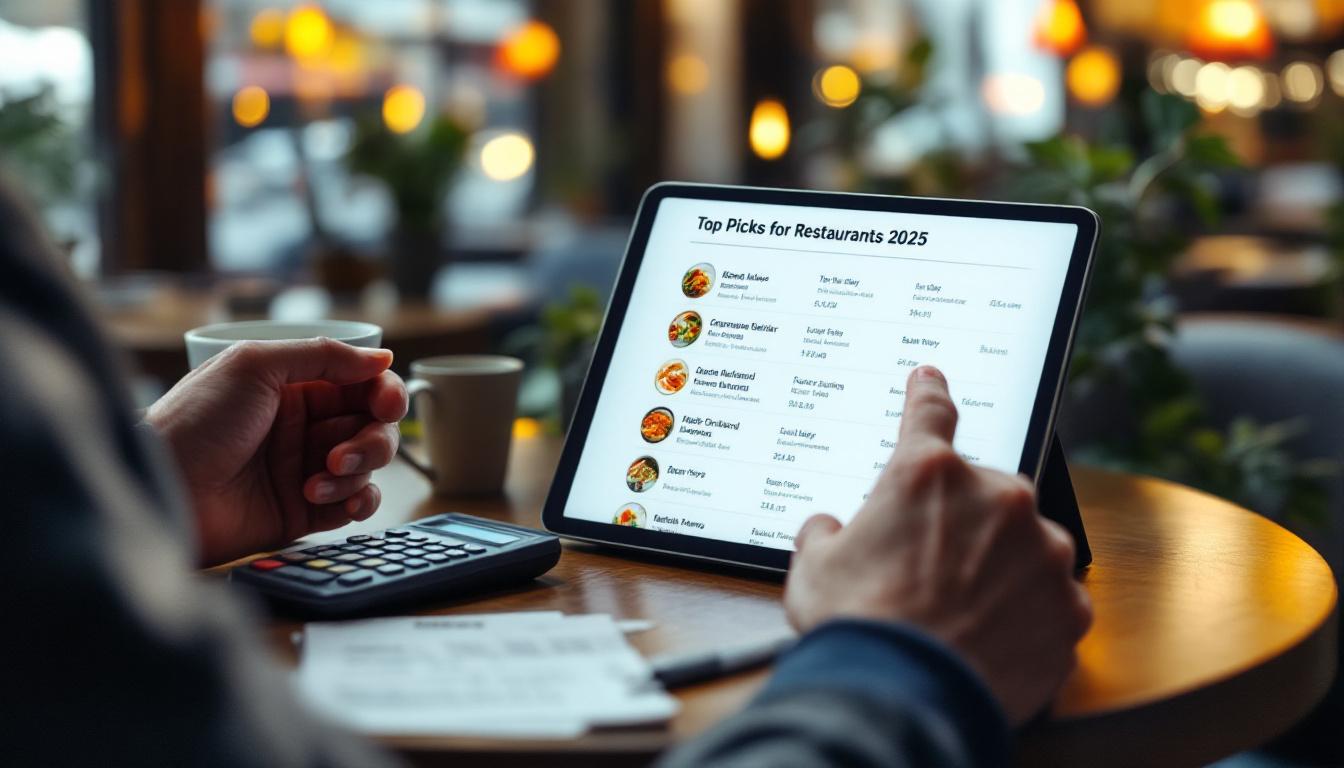
- Restaurant365 — All-in-one platform built for restaurants and multi-unit operations.
- QuickBooks Online — Flexible, widely adopted, strong for small-to-midsize restaurants with many integrations.
- Xero — Clean UI, strong bank sync, and good for businesses working with international suppliers.
- Zoho Books — Cost-effective, user-friendly for smaller operations."
- TouchBistro — POS-first solution with accounting features and smooth QuickBooks/Xero integrations.
1. Restaurant365 — the all-in-one for scale and control
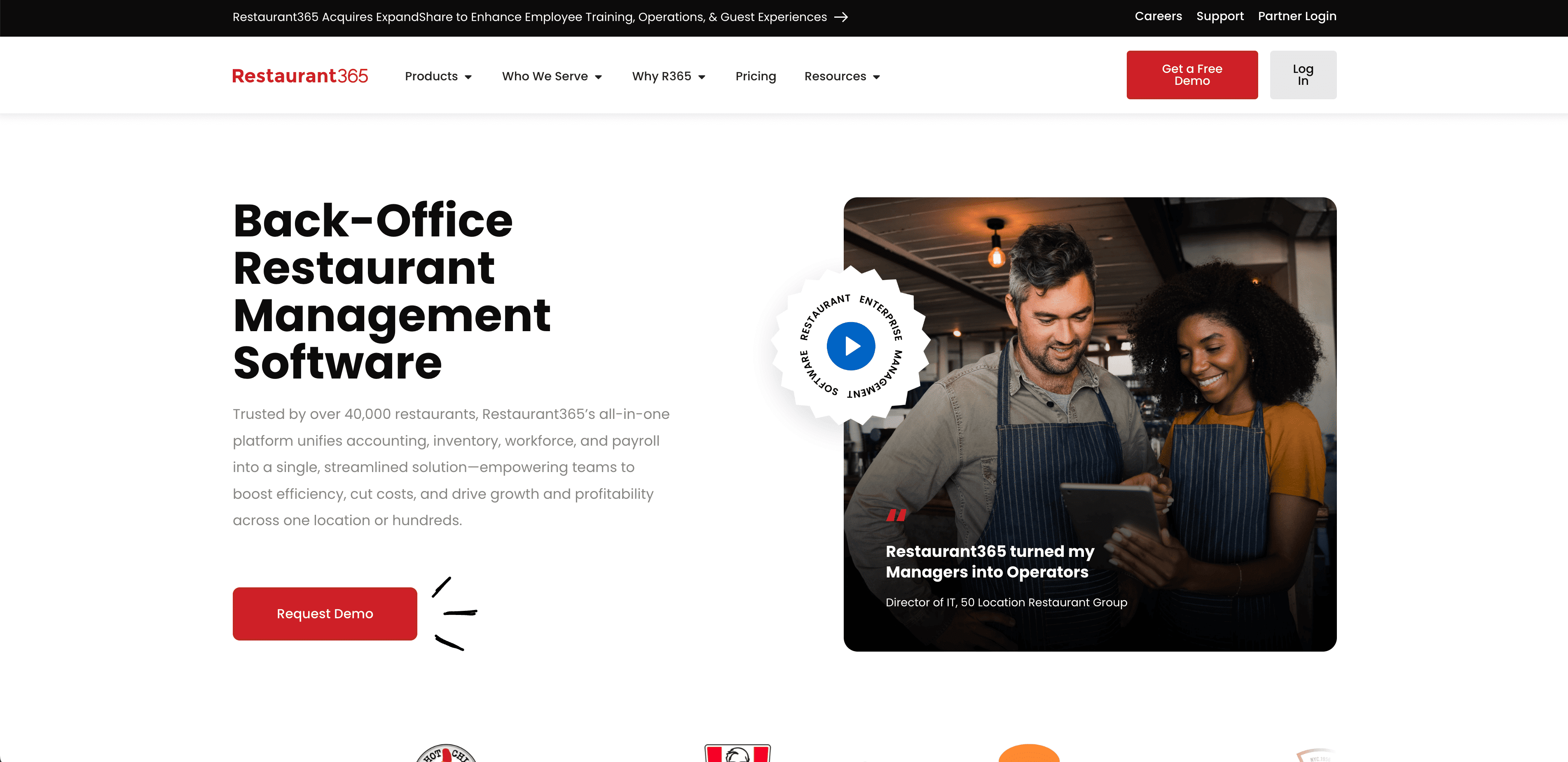
If you’re running multiple locations, a franchise, or a large single unit, Restaurant365 is built for your needs. It’s not cheap, but it’s engineered to replace seven or eight disconnected systems.
Key strengths
Restaurant365 automatically pulls POS and labor data to generate journal entries. That reduces bookkeeping errors and dramatically shortens month-end close.
Advanced inventory tools track recipe-level usage and real-time counts, so you can catch variances quickly and control prime costs.
Workforce and payroll
The workforce tools include forecasting and scheduling tied to sales data, which helps optimize labor as demand shifts. Integrated payroll and HR capabilities reduce payroll errors and simplify compliance across jurisdictions.
Integrations and ecosystem
Restaurant365 integrates with a wide range of POS systems, vendors, and banks. For multi-unit operators, that single source of truth is invaluable — consolidated P&Ls, vendor performance, and centralized purchasing.
Who should pick Restaurant365?
Choose Restaurant365 if you run 5+ units, manage franchises, or need sophisticated inventory and purchasing controls tied directly to accounting. It’s especially useful if you want to replace an existing tangle of point systems with one platform.
2. QuickBooks Online — flexible and ubiquitous
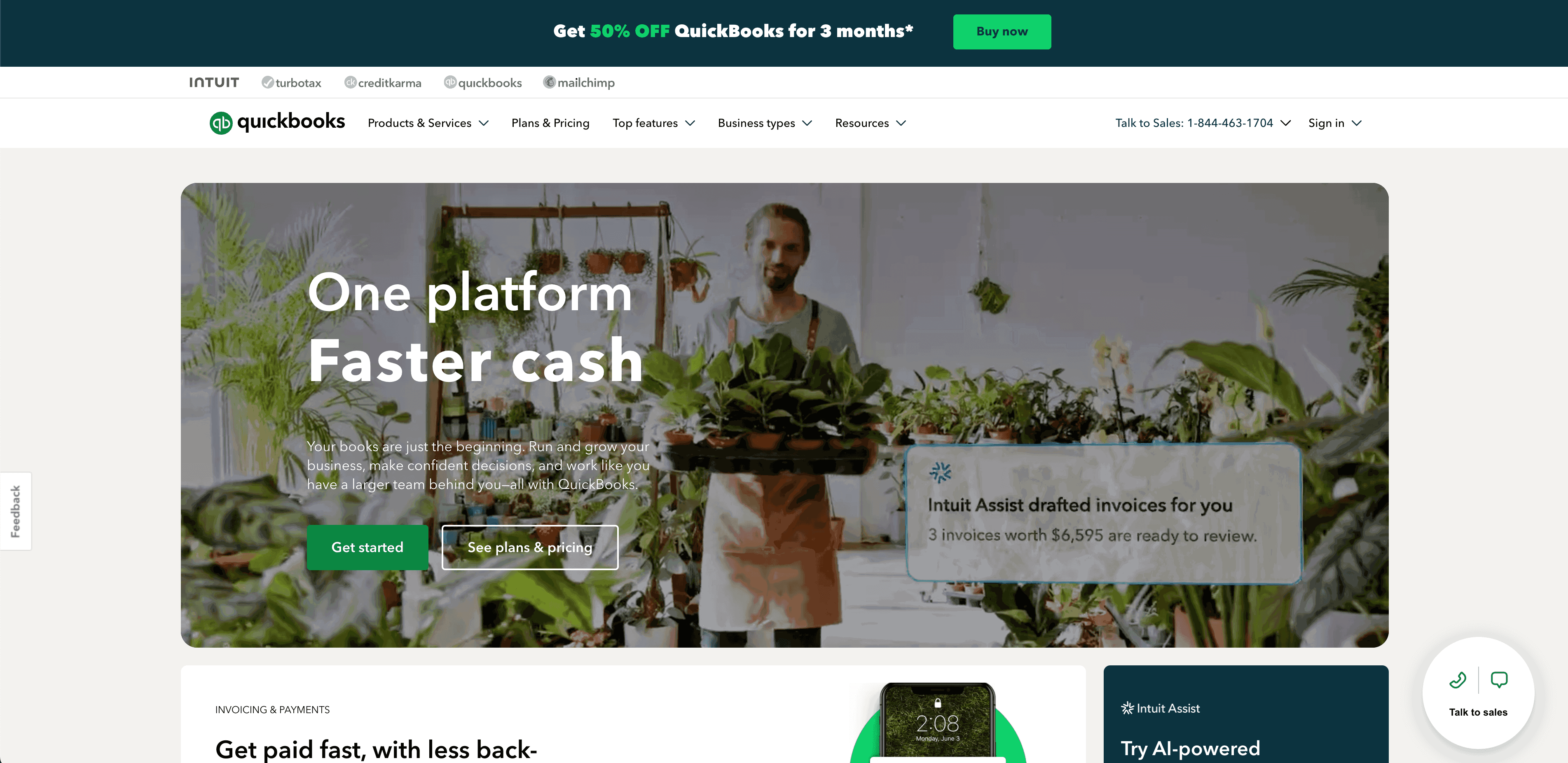
QuickBooks Online (QBO) is the Swiss Army knife: adaptable, familiar to accountants, and supported by countless integrations. It’s a pragmatic choice for single-unit restaurants and growing operations that want stable bookkeeping with POS connectivity.
What QuickBooks does well
QBO offers solid inventory tracking, receipt capture via mobile, bank sync, real-time reporting, and an industry-specific chart of accounts. It’s intuitive for managers who aren’t accounting experts.
POS and third-party integrations
Because QuickBooks is so widely used, nearly every restaurant POS offers a connector. That makes implementation straightforward and keeps sales data flowing into bookkeeping automatically.
Limitations
QuickBooks is not a full restaurant management platform — payroll or inventory features may require add-ons or third-party tools for a complete solution. If you want built-in recipe costing and deep inventory controls, QBO alone might fall short.
Who should use QuickBooks?
Single-unit restaurants, small chains, and operators who want robust accounting without a heavy investment in an industry-specific ERP should start with QBO. It’s also a great interim choice while you scale toward a larger solution.
3. Xero — clean, bank-friendly, and scalable
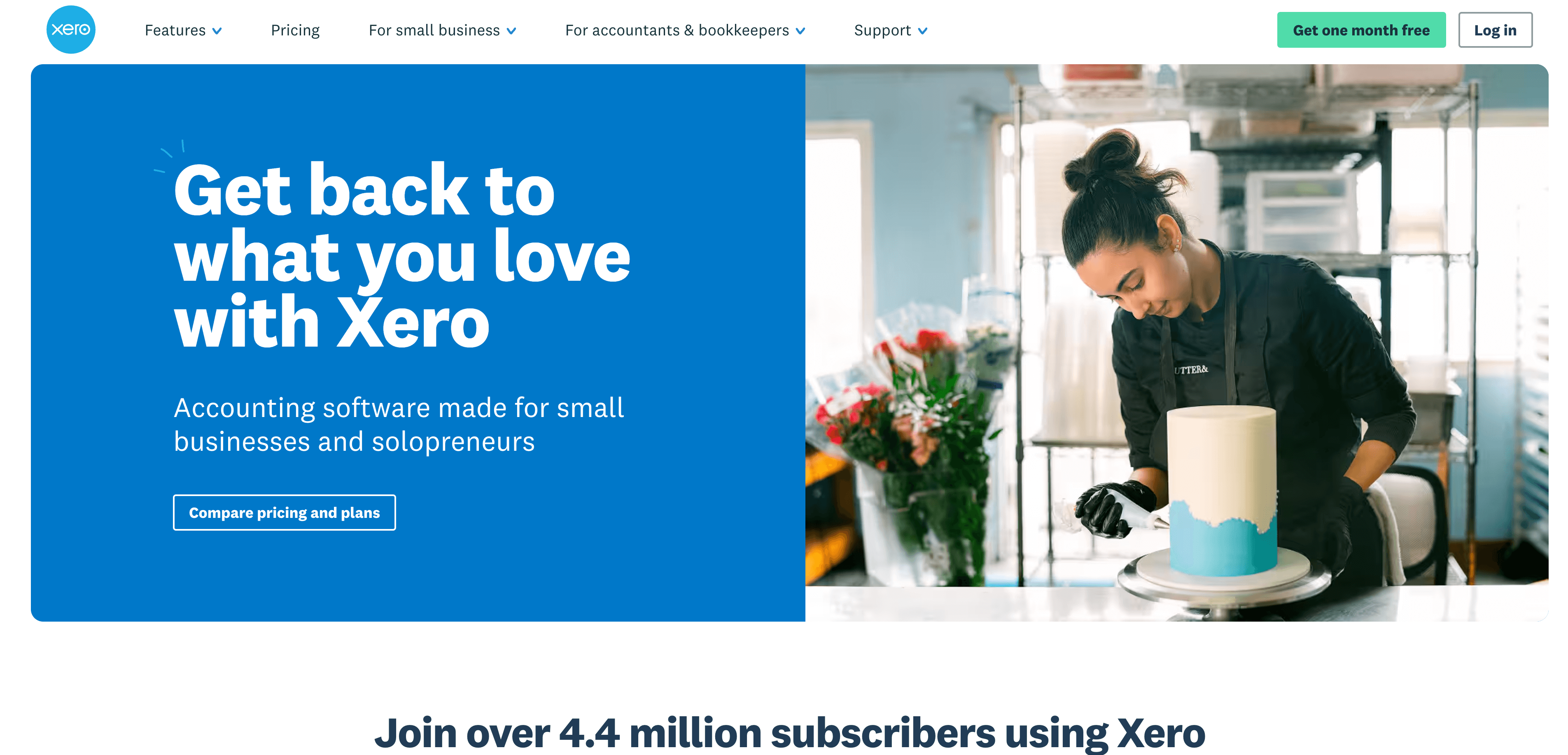
Xero is a compelling alternative to QuickBooks, especially if you need multi-currency support or a cleaner, simpler UI. It automates invoices, bank reconciliations and integrates with many restaurant tools. Xero's strength in multi-currency banking features makes it ideal for restaurants with international suppliers.

Cash flow and reconciliation
One of Xero’s strengths is real-time cash flow visibility and easy bank reconciliation. If your business deals with international suppliers, the multi-currency features reduce manual headaches.
Mobile and accessibility
Xero’s mobile app is effective for on-the-go managers. You can approve bills, reconcile transactions, and review cash flow from your phone — useful for operators who aren’t desk-bound.
Integrations and ecosystem
Xero integrates with major POS systems and a growing set of restaurant tools. It sits somewhere between QuickBooks (broad ecosystem) and Restaurant365 (industry depth).
Who should pick Xero?
Small-to-medium restaurants with occasional international purchasing or those who prefer a simpler interface than QuickBooks will like Xero. It’s a good fit for operators who want strong bank integrations and easy day-to-day bookkeeping.
4. Zoho Books — budget-friendly with clean UI
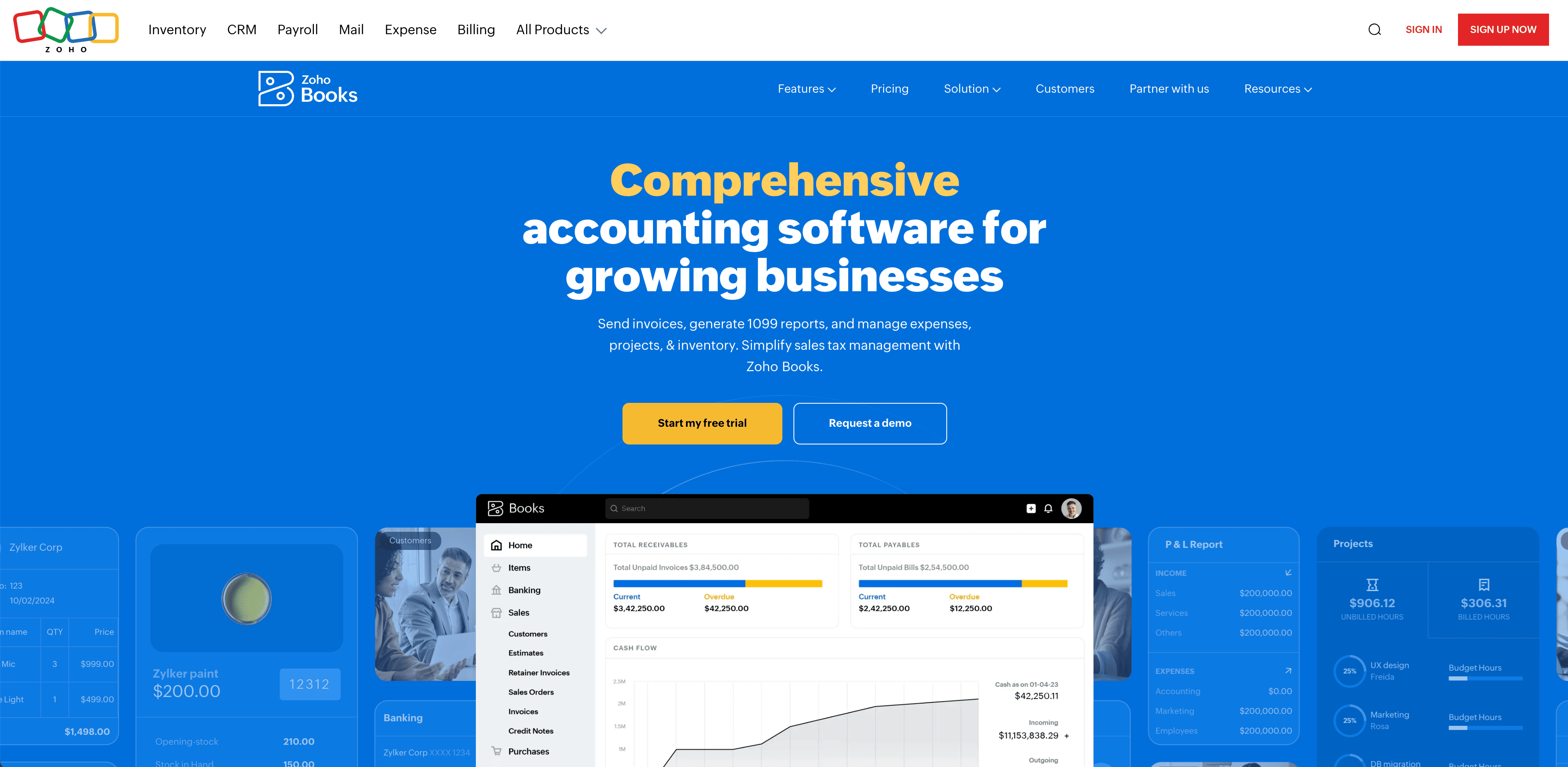
Zoho Books is often overlooked, but it offers solid accounting features at a lower price point. It’s a practical choice for independent restaurants or startups watching cash flow closely.
Inventory and invoicing
Zoho Books tracks inventory, supports recurring invoices, and handles multi-currency billing. It’s not as focused on recipe costing, but it centralizes stock tracking well for its price.
Ease of use
The interface is straightforward and easy to teach to managers. Zoho also connects with popular POS like Square to keep sales data in sync.
When to choose Zoho Books
Choose Zoho Books for a cost-effective accounting foundation. If your operation is small and you need clean financials without the overhead of an enterprise platform, Zoho is worth testing.
5. TouchBistro — POS-first with neat accounting hooks
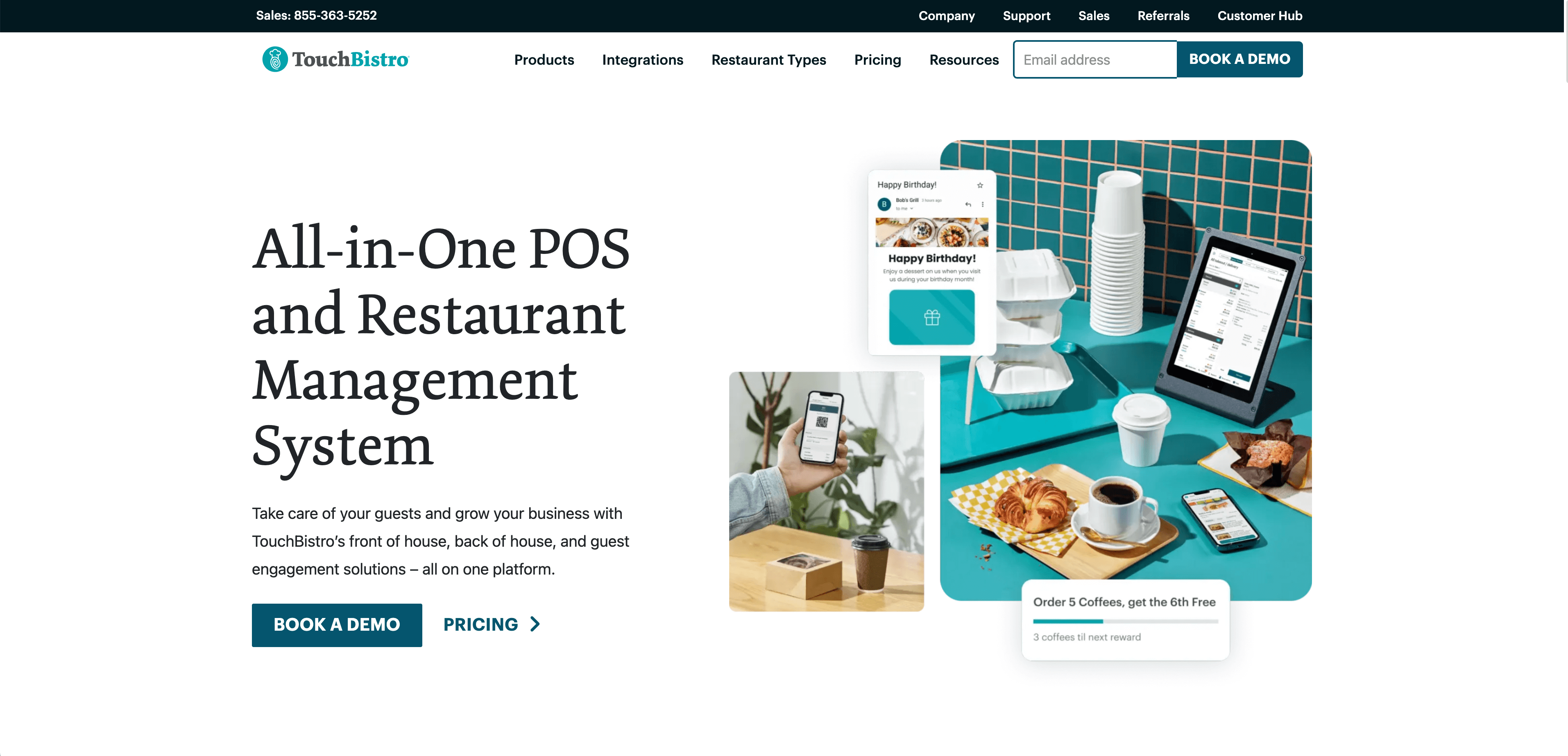
TouchBistro is primarily a POS, but its accounting features and connectors to QuickBooks and Xero make it a sensible pick if you already use the platform for ordering and payments.
Why POS-first matters
When your POS is the system of record for sales and payroll, the simplest path to clean accounting is a POS that understands restaurant workflows. TouchBistro reduces friction between floor operations and bookkeeping.
Best-fit scenarios
If you’re starting with TouchBistro as your POS, leveraging its accounting features or its connectors keeps implementation fast. It’s ideal for single or small multi-unit operations that want tight POS-accounting alignment.
Additional considerations before signing a contract
These are practical, easy-to-overlook items that determine how successful your rollout will be.
Onboarding & training
Ask for a detailed onboarding plan. Who trains your managers? How long is the pilot? What data migration services are included? Without structured onboarding, software adoption stalls.
Data migration
Migrating historical sales, vendor ledgers, and open AP/AR is often harder than expected. Clarify export/import formats and test a dry run before committing.
Support SLA and account management
Does the vendor assign a dedicated account manager? What are support hours? For restaurants that operate evenings and weekends, 24/7 support can be critical.
Security and compliance
Ensure the vendor follows best practices for data security and provides documentation for tax audits. For multi-state operations, confirm payroll compliance features for each jurisdiction.
Checklist: Questions to ask during demos
Use these questions in sales calls to avoid vendor sugar-coating.
- Can you show a live flow from POS sale → journal entry → bank reconciliation?
- How do you handle tip pooling, tip-outs, and credit card fees in payroll?
- Do you support recipe-level costing and vendor price change alerts?
- What’s included in onboarding? Is data migration extra?
- How are updates delivered and how often do integrations break with POS upgrades?
- What are typical timelines for rolling out to a single location vs. 20 locations?
Implementation roadmap — how to make the switch without chaos
Switching software can feel like a threat to daily operations. Here’s a phased approach to reduce risk and preserve continuity.

Phase 1 — Discover and map
Map current workflows: POS, purchasing, receiving, payroll, tax filings, and monthly close. Identify the biggest pain points — not just “it takes time” but specifics like “inventory variance averages 6% monthly.”
Phase 2 — Pilot
Run a 30–90 day pilot at a single location. Import last three months of sales and accounts payables. Verify that daily sales autopost correctly, and reconcile the first week to catch mapping issues.
Phase 3 — Train and document
Train managers on day-to-day tasks and create clear SOPs for the new system: how to post credits, handle refunds, count inventory, and approve payroll.
Phase 4 — Rollout and iterate
Roll out in waves. Monitor KPIs like time to close, inventory variance, and payroll errors. Iterate on mapping and training as you discover edge cases.
Common pitfalls and how to avoid them
Here are the mistakes I see repeatedly and the practical ways to avoid them.
Underestimating integration work
Vendors will say “we integrate with X.” That doesn’t mean it auto-syncs every field you need. Test every revenue center, discount type, and tender method during the pilot.
Choosing features over people
A brilliant dashboard is useless if managers don’t use it. Prioritize tools that reduce time and cognitive load. Training and SOPs often deliver more impact than a shiny feature.
Ignoring monthly close time
Measure month-end close time before and after. If a tool doesn’t reduce close time or deliver cleaner P&Ls, it’s not solving the core problem.
Real-world metrics to watch after implementation
Once your system is live, track these KPIs to measure impact and catch regressions early.
- Prime cost as a percentage of sales (labor + COGS).
- Inventory variance month-over-month.
- Days payable outstanding and vendor mix.
- Time to close monthly books (hours).
- Payroll errors and overtime spikes.
Case studies and examples
Real operators give the clearest feedback. Below are anonymized scenarios that highlight matching software to need.
Single-unit, high-volume independent
Owner A runs a busy downtown bistro with heavy takeout. They prioritized a solid POS and QuickBooks Online. The switch reduced monthly reconciliation time from 40 hours to 15 hours and improved cash visibility. They layered a third-party inventory tool for recipe costing.
Regional fast-casual chain (10 units)
Operator B needed centralized purchasing and multi-unit P&Ls. Restaurant365 replaced a patchwork of spreadsheets and reduced inventory variance from 8% to 3% within six months by centralizing vendor price management and recipe-level usage.
Small catering business expanding into a single brick-and-mortar
Operator C chose Xero because of multi-currency vendor billing and easy bank reconciliation. The team values the clean mobile app for approvals during event setups.
Final recommendations — pick with confidence
Here’s the short version you can act on today.
- Choose Restaurant365 if you operate multiple units, need deep inventory/purchasing capabilities, and want to centralize operations.
- Choose QuickBooks Online if you want widely supported accounting with lots of POS integrations and a strong accountant ecosystem.
- Choose Xero if you value clean bank reconciliation, multi-currency support, and a simpler UI.
- Choose Zoho Books if you need a cost-effective, easy-to-use accounting system for a small operation.
- Stick with TouchBistro’s accounting hooks if your POS is TouchBistro and you want minimal friction between front-of-house and accounting.
A final piece of real talk
Software doesn’t fix sloppy processes. It makes good processes repeatable and measurable. If you want different results, change the process first — then pick the software that enforces it.
Ready to make a decision? Start with a short pilot and a tight checklist: POS mapping, payroll flows, inventory syncs, and month-end close time. If your vendor can’t demonstrate those in a 30–90 day pilot, keep looking.
Pick a single metric you want to improve (close time, inventory variance, or payroll errors), choose a software that directly addresses it, and run a real pilot. That one decision will change how your financials look — and how you plan for growth.
Now take that checklist, schedule the demo, and ask the questions listed above. You’ll immediately see who understands restaurants and who’s selling generic accounting software with a restaurant-themed skin. That difference matters.
.svg)










